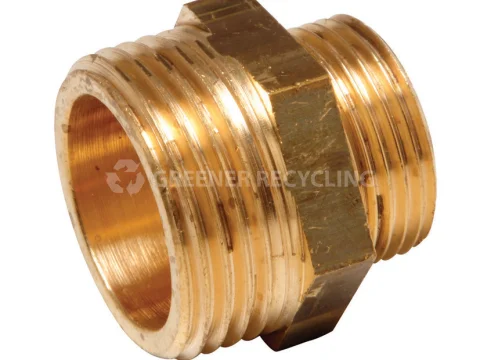 Go to prices below
Go to prices belowAlong with copper, brass is another metal that is widely used in various industries. It is applyed in electric wiring, locksmithing, architecture, house fitting, music, etc. Its wide range of use is due to the characteristics brass possesses, including high electrical and thermal conductivity, strength and durability, corrosion and wear resistance.
Unlike copper, brass does not occur naturally as it is an alloy. Typically, it combines two metals: copper and zinc. However, lead, aluminum, iron or tin can be added depending on the properties an alloy is supposed to have.
Brass commonly comes in red and yellow, and these colors might vary in their tinting.
Red brass with its higher scrap price contains more than 80% cuprum, which is what actually gives it its reddish color. This type is common in plumbing and can be recycled.
Yellow brass composition consist of about 60% Cu (that's why its price is lower),and the rest is comprised of zinc and some other metals. It typically can be found in plumbing, taps, locks and keys, etc.
| Scrap type | Price, $ / lb. | |
|---|---|---|
 Plumbing Brass Plumbing Brass | $1.20-$1.80/lb | |
 Brass Radiators Brass Radiators | $1.60-$1.90/lb | |
 Yellow Brass Yellow Brass | $2.10-$2.30/lb | |
 Red Brass Red Brass | $2.60-$2.90/lb | |
 Water Meters Water Meters | $2.00-$3.00/lb | |
 Brass Shells Brass Shells | $2.00-$2.40/lb |
Brass recycling is currently of significance, as this metal production is rather costly, so most part of the alloy used today is recycled. Many scrap yards accept brass products, and you can sell them at good prices. The scrap value per pound will depend on the type of alloy, its characteristics and state.
